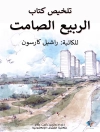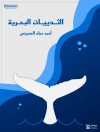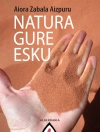This book demonstrates the measurement, monitoring and mapping of environmental contaminants in soil & sediment, surface & groundwater and atmosphere. This book explores state-of-art techniques based on methodological and modeling in modern geospatial techniques specifically focusing on the recent trends in data mining techniques and robust modeling. It also presents modifications of and improvements to existing control technologies for remediation of environmental contaminants. In addition, it includes three separate sections on contaminants, risk assessment and remediation of different existing and emerging pollutants. It covers major topics such as: Radioactive Wastes, Solid and Hazardous Wastes, Heavy Metal Contaminants, Arsenic Contaminants, Microplastic Pollution, Microbiology of Soil and Sediments, Soil Salinity and Sodicity, Aquatic Ecotoxicity Assessment, Fluoride Contamination, Hydrochemistry, Geochemistry, Indoor Pollution and Human Health aspects. The content of this book will be of interest to researchers, professionals, and policymakers whose work involves environmental contaminants and related solutions.
Tabella dei contenuti
Part I. Soil and Sediment Contaminants, Risk Assessment and Remediation.- Chapter 1. Introduction to Part I: Soil and Sediment Contaminants, Risk Assessment and Remediation.- Chapter 2. Combating Arsenic Pollution in Soil Environment via Alternate Agricultural Land Use.- Chapter 3. Temporal and Seasonal Variation in Leachate Pollution Index (LPI) in Sanitary Landfill Sites- A Case study of Baidyabati landfill, West Bengal, India.- Chapter 4.Quantification of Landfill Gas Emission and Energy Recovery Potential: A Comparative Assessment of Land GEM and MTM Model for Kolkata.- Chapter 5. Assessment of natural enrichment of heavy minerals along coastal placers of India: Role of lake and river mouth embayment and its implications.- Chapter 6. Assessment the Impact of Plastic Contaminated Fertilizers on Agricultural Soil Health: A Case Study in Memari II C.D.Block, Purba Bardhaman, West Bengal, India.- Chapter 7. Determining the Role of Leaf Relative Water Content and Soil Cation Exchange Capacity in Phytoextraction Process – Using Regression Modelling.- Chapter 8. Phytoremediation of Arsenic using Allium sativum as Model System.- Chapter 9. Spatio-temporal analysis of open waste dumping sites using Google Earth: A case study of Kharagpur City, India.- Part II. Water Contaminants, Risk Assessment and Remediation.- Chapter 10. Introduction to Part II: Water Contaminants, Risk Assessment and Remediation.- Chapter 11. Groundwater Arsenic Contamination Zone based on geospatial modeling, risk and remediation.- Chapter 12. Geospatial assessment of surface water pollution and industrial activities in Ibadan, Nigeria.- Chapter 13. Aquaculture-based water quality assessment and risk remediationalong the Rasulpur River belt, West Bengal.- Chapter 14. Heavy Metal Contamination in Groundwater and Impact on Plant and Human.- Chapter 15. Emerging Threats of Microplastic contaminant in freshwater environment.- Chapter 16. Exploring Particle Size Transport Variabilityof Suspended Sediments in two Alpine Catchments over the Lesser Himalayan Region, India.- Chapter 17. Salinity and corrosion potential of groundwater in Mewat district of Haryana, India.- Chapter 18. Threats to quality in the coasts of the Black Sea: heavy metal pollution of seawater, sediment, macro-algae and sea-grass.- Chapter 19. Geospatial assessment of groundwater quality for drinking through Water Quality Index and Human Health Risk Index in an upland area of Chotanagpur Plateau of West Bengal, India.- Chapter 20. Existence of Pharmaceuticals and Personal Care Products (PPCPs) in the conventional water treatment process.- Chapter 21. Arsenic-rich surface and groundwater around eastern parts of Rupnagar district, Punjab, India.- Part III. Environmental Contaminants, Impacts and Sustainable Management.- Chapter 22. Introduction to Part III: Environmental Contaminants, Risk Assessment and Remediation.- Chapter 23. Dynamics of ultra-fine particles in indoor and outdoor environments: a modelling approach to study the evolution of particle characteristics.- Chapter 24. Environmental impacts of coal-mining and coal-fired power-plant activities in a developing country with global context.- Chapter 25. Overview of Indoor air pollution: A human health perspective.- Chapter 26. Mineralogy and Morphological characterization of Technogenic Magnetic Particles (TMP) from industrial dust: Insights into environmental implications.- Chapter 27. Pesticides: Recent Updates on Types Toxicity and Bioremediation Strategies.- Chapter 28. Commonly available plant neem (Azadirachtaindica A. Juss) ameliorates dimethoate induced toxicity in climbing perch Anabas testudineus.- Chapter 29. Estimating Particulate Matter concentrations from MODIS AOD considering meteorological parameters using Random Forest Algorithm.- Chapter 30 Bio-monitoring and bioremediation of a trans-boundary river in India: Functional roles of benthic mollusks and fungi.- Chapter 31 Assessing the Maximum Aerobic Biodegradation Potential of Leaf Litter, an Organic Fraction of Municipal Solid Waste, Under Optimum Nutrient Conditions.- Chapter 32. Rising trend of air pollution and its decadal consequences on meteorology and thermal comfort over Gangetic West Bengal, India.
Circa l’autore
Dr. Pravat Kumar Shit is an Assistant Professor at the PG Department of Geography, Raja N. L. Khan Women’s College (Autonomous), West Bengal, India. He received his M.Sc & Ph.D. degrees in Geography from Vidyasagar University and PG Diploma in Remote Sensing & GIS from Sambalpur University. His research interests include applied geomorphology, soil erosion, groundwater, forest resources, wetland ecosystem, environmental contaminants & pollution, and natural resources mapping & modeling. He has published seven books (five books in Springer) and more than 50 papers in peer-reviewed journals. He is currently the editor of the GIScience and Geo-environmental Modelling (GGM) Book Series, Springer-Nature.
Dr. Partha Pratim Adhikary is a Senior Scientist at ICAR-Indian Institute of Water Management, Bhubaneswar, India. He obtained his Ph.D. in Agricultural Physics from ICAR-Indian Agricultural Research Institute, New Delhi, India. His research interests include solute transport, soil and water conservation and management, pedotransfer functions, and geospatial modeling of natural resources. Dr. Adhikary has published more than 60 research papers in peer reviewed journals and three books. His other publications include book chapters, popular articles, technology brochures, technical bulletins and scientific reports. He is the associate editor of Indian Journal of Soil Conservation. Currently, he is the editor of Springer-Nature book series “GIScience and Geo-environmental Modelling”.
Prof. (Dr.) Debashish Sengupta is working as Professor, Higher Administrative Grade and Former Head of the Department of Geology and Geophysics in Indian Institute of Technology (IIT) Kharagpur, West Bengal, India. Prof. Sengupta has more than 30 years of teaching and research experience. He has completed his Ph D in 1987 in Applied Geophysics. His areas of interests are nuclear geophysics including petroleum logging using subsurface nuclear data, radioactive methods and geochronology, radon emanometry and its applications, applications of isotopes and radionuclides in earth and environmental geosciences, heat flow and geothermics. Prof. Sengupta has 100 research publications in international journals and more than 60 papers in Conference Proceedings apart from a large number of Invited Talks delivered both in India and abroad. The research work has been seminal and resulted in the formulation of Environmental Regulation policies in various countries both in India and countries like USA, South America and the European Union. Prof. Sengupta had also been a Visiting Professor at the University of Sao Paulo, Brazil and as Senior Visiting Professor at the University of Salamanca, Spain, earlier, while on a sabbatical leave from the institute. He has received Society of Geoscientists and Allied Technologists (SGAT’s) Award of Excellence in Earth Sciences forthe year 2003. Prof. Sengupta has published four books.












